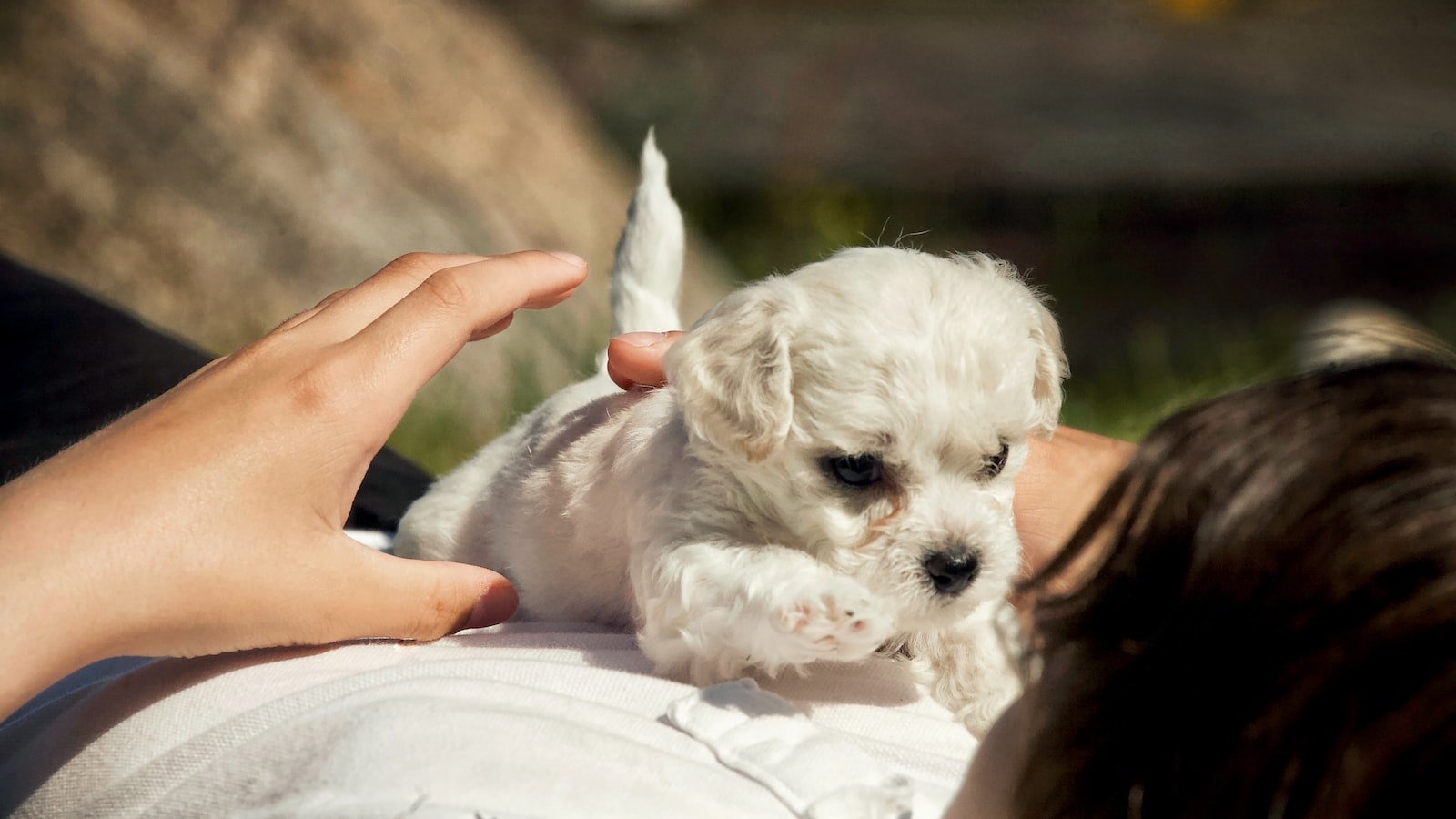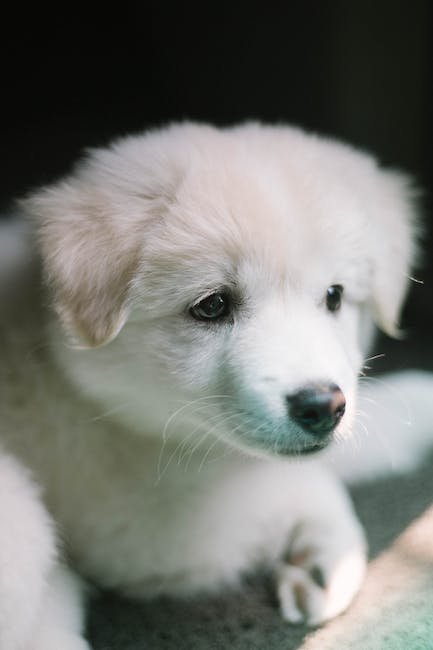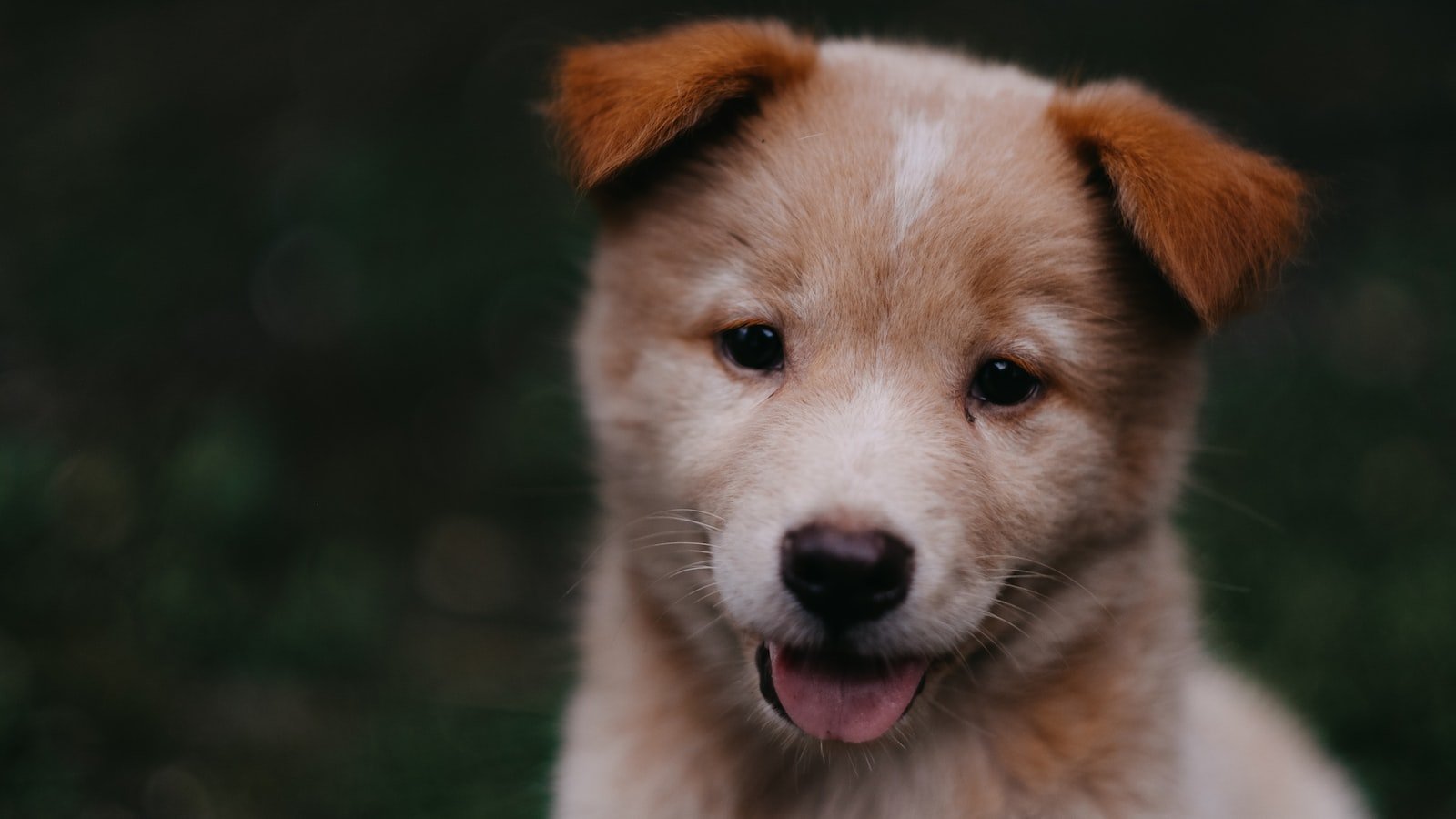From the moment they step into our lives, puppies have an enchanting way of captivating our hearts. Those endearing, floppy-eared bundles of joy soon become cherished members of our families, showering us with boundless love and affection. Yet, beneath their adorable exterior lie a complex world of non-verbal communication that holds the key to understanding their needs, emotions, and desires. Learning to decipher the language of puppy body cues is not only a fascinating adventure but a crucial step in building a strong and meaningful bond with our furry companions. So, join us as we delve into the fascinating realm of puppy body language, unraveling the mysterious signals they send with their tails, ears, and sparkling eyes.
Table of Contents
- Signs of a Happy Puppy: Understanding their Body Language
- Decode Your Puppy’s Communication: Learning to Read Their Cues
- Recognizing Stress and Fear: Insights into Puppy Body Language
- Building Trust and Bonding: Effective Strategies for Understanding Your Puppy
- Tips to Respond Appropriately: How to React to Your Puppy’s Body Language
- Q&A
- Final Thoughts

Signs of a Happy Puppy: Understanding their Body Language
Understanding their Body Language
When it comes to understanding if your puppy is happy, their body language can tell you a lot. Dogs are known to communicate through various gestures and postures. By observing their behavior, you can gain valuable insights into their emotions and overall well-being. Here are some signs to look out for that indicate a happy puppy:
- Relaxed and wagging tail: A wagging tail, not too tense, is a sure sign that your puppy is happy and excited. The movement of their tail can convey a range of emotions, so be mindful of the overall context.
- Playfulness and energy: A happy puppy is likely to be full of energy. They may constantly be looking for opportunities to play, wagging their entire body enthusiastically. Enjoy those lively play sessions!
- Relaxed ears and open mouth: When your puppy’s ears are relaxed and not pinned back, it indicates they are comfortable and at ease. Additionally, an open and slightly panting mouth is a sign of contentment.
- Bright, alert eyes: Happy puppies have bright and sparkling eyes. They will make eye contact with you, seeking affection and interaction. Watch for the way their eyes light up when they see you!
- Responsive body language: A happy puppy will exhibit responsiveness and engagement during interactions with you. They will eagerly follow you, listen to your commands, and show the desire to be close to you.
Remember, every puppy is unique, and it’s important to consider their individual personality and breed traits in understanding their body language. By paying attention to these signs, you can foster a deeper bond with your furry friend and ensure their happiness and well-being.

Decode Your Puppy’s Communication: Learning to Read Their Cues
Understanding your puppy’s communication cues is key to building a strong and trusting bond with your furry friend. While they may not speak our language, puppies have a whole range of ways to let us know how they’re feeling or what they need. By learning to decipher these cues, you can ensure that your puppy feels understood, comfortable, and loved.
Visual Cues:
Your puppy’s body language can speak volumes. Notice the position of their ears, tail, and the overall posture. A relaxed and wagging tail along with floppy ears indicates happiness, while a tucked tail and flattened ears suggest fear or anxiety. Pay attention to their eyes as well – wide and alert eyes may mean they are excited or curious, while narrowed or squinting eyes could indicate aggression or discomfort.
Verbal Cues:
While barks and growls are the most obvious sound cues, puppies have a wide range of vocal expressions. Whining can be a sign of distress or a plea for attention, while high-pitched barks may convey excitement or alarm. Pay attention to the tone and intensity of their vocalizations to better understand their emotional state.
Behavioral Cues:
Puppies communicate through their actions too. Excessive licking can be a sign of affection or submissiveness, while growling or snapping may be a warning to back off. Keep in mind that the context and accompanying cues are essential in interpreting behavioral signals. Watch out for patterns and consistently reinforce positive behavior to create a safe and nurturing environment for your puppy.

Recognizing Stress and Fear: Insights into Puppy Body Language
Puppies are fascinating creatures, constantly providing us with endless joy and unconditional love. However, just like humans, they too can experience stress and fear. Understanding their body language is crucial in helping them navigate their emotions and ensuring their overall well-being.
1. Tail position: The position of a puppy’s tail can give us valuable insight into their emotional state. A relaxed and wagging tail is a sign of contentment and happiness. However, a tucked tail or one held low between the hind legs can indicate fear or submission.
2. Ears: Pay attention to a puppy’s ears as they can reveal a lot about their mood. Erect and forward-facing ears generally signify attentiveness and curiosity. On the other hand, flattened or backward-facing ears may be a sign of fear or anxiety.
3. Body posture: A puppy’s body posture speaks volumes about their well-being. A relaxed and loose stance suggests comfort and ease, while a tense and stiffened body implies stress or fear. Keep an eye out for trembling or cowering as well, as these behaviors can indicate an anxious state.
It is essential to approach a stressed or fearful puppy with patience and empathy. By understanding their body language, we can better support them through challenging moments and create a safe and secure environment for their emotional growth. Remember, a happy and confident puppy is one that thrives in the world around them.
Building Trust and Bonding: Effective Strategies for Understanding Your Puppy
One of the most crucial aspects of raising a happy and well-behaved puppy is establishing a strong bond built on trust. By understanding your furry friend and employing effective strategies, you can strengthen your connection and create a harmonious partnership. Here are some helpful tips to foster trust and deepen your understanding of your new puppy:
- Patience is Key: Remember that your puppy is still learning and growing, so be patient throughout the process. Allow them time to adjust to their new surroundings and routine. By giving them space to explore and adapt at their own pace, you’ll build trust and help them feel secure.
- Positive Reinforcement: Praise and rewards go a long way in building trust. Whenever your puppy displays desirable behavior, such as following a command or using their designated potty area, shower them with praise and treats. This positive reinforcement will not only strengthen their bond with you but also encourage them to repeat good behaviors.
- Communicate Clearly: Dogs are highly perceptive animals, so effective communication is key. Use consistent verbal cues and hand signals to convey your expectations. Pair your commands with gentle touches and a calm tone of voice to establish a clear line of communication and help your puppy understand what you’re asking of them.
Bonding with your puppy takes time and effort, but the rewards are immeasurable. By implementing these strategies and showcasing your love and dedication, you’ll lay the foundation for a trusting and mutually fulfilling relationship that will last a lifetime.
Tips to Respond Appropriately: How to React to Your Puppy’s Body Language
Understanding your puppy’s body language is vital to building a strong and harmonious bond with your furry companion. Dogs communicate primarily through their body movements and gestures, and it’s crucial to learn how to interpret and respond to their cues appropriately. Here are some tips to help you navigate and react to your puppy’s body language effectively:
- Observe and Learn: Pay keen attention to your puppy’s body language in various situations. Notice their tail position, ear posture, and overall body tension. Familiarize yourself with different expressions that indicate fear, excitement, relaxation, or discomfort.
- Stay Calm and Relaxed: Dogs are incredibly perceptive, and they can pick up on your energy. Remain calm and relaxed in your interactions with your puppy. This will help create an environment of trust and encourage open communication.
- Respect Personal Space: Just like humans, dogs have boundaries. Respect their need for personal space and allow them to approach you on their terms. Avoid looming over your puppy or invading their space when they display signs of anxiety or fear.
- Respond Positively: When your puppy exhibits behavior that reflects confidence, comfort, or eagerness to interact, respond with positive reinforcement. Praise them, reward them with treats or toys, and use encouraging words to reinforce their good behavior.
- Seek Professional Help: If you are unsure about your puppy’s body language or notice any concerning behaviors, don’t hesitate to reach out to a professional dog behaviorist or trainer. They can provide expert guidance tailored to your puppy’s specific needs.
By familiarizing yourself with your puppy’s body language and responding appropriately, you can establish a deeper understanding and connection with your canine companion. This will lead to a happier, healthier, and more fulfilling relationship for both of you.
Q&A
What are some common signs of a happy puppy?
A happy puppy will often have loose, wagging tail, relaxed body language, and a playful demeanor. They may also approach you with a wagging tail and bright eyes.
How can I tell if my puppy is feeling anxious or stressed?
An anxious or stressed puppy may exhibit signs such as tucked tail, ears pulled back, excessive panting, whining, or yawning. They may also try to hide or cower away from stimuli or people.
What does it mean when a puppy starts growling?
Growling can indicate that a puppy is feeling threatened, scared, or uncomfortable. It is important to identify the source of their discomfort and give them space or remove them from the situation if necessary.
How can I recognize if my puppy is being aggressive?
Aggression in puppies can be identified through behaviors such as snarling, showing teeth, raised hackles, stiff or still body posture, snapping, and lunging. Seeking guidance from a professional trainer or behaviorist is essential to address aggression in puppies.
What does it mean when a puppy licks its lips?
Lip licking in puppies can indicate various emotions, such as nervousness or anticipation. It can also be a calming signal that a puppy uses to communicate with humans or other dogs.
What should I do if my puppy’s body language shows fear or discomfort?
When your puppy shows fear or discomfort through their body language, it is crucial to create a safe and calm environment for them. If possible, remove them from the source of stress and consult a professional behaviorist to help address their fear or discomfort.
How can I prevent misunderstandings with my puppy due to body language?
The key to preventing misunderstandings is to educate yourself on canine body language. Observe and learn the various signals and behaviors that indicate different emotional states in puppies. This knowledge will help you understand and respond appropriately to your puppy’s needs.
Final Thoughts
As we bring our journey through the fascinating world of puppy body language to a close, take a moment to marvel at the incredible ways in which our furry friends communicate. Remember, understanding their subtle cues is not just a skill, but an art that deepens the bond between humans and canines.
So next time you encounter a wagging tail, a playful jump, or a cocked head, don’t simply see it as cute or amusing. Instead, pause and decipher the story behind those gestures – the tale of emotions and intentions told through the language of paws, tails, and barks.
In a world where words fail, puppies become experts in conveying their desires, fears, and joys through their vibrant body language. They teach us to listen with our eyes, to observe the intricacies of their movements, and to respond with patience and empathy.
Whether it’s the gentle lean against your leg seeking comfort or the cautious sidestep indicating insecurity, may we all strive to grasp the nuances of puppy communication. Let’s be attuned to the subtle shifts of their ears, the raised hackles along their spines, and the softness in their gaze. For in those moments lies the foundation of true understanding and a connection that transcends the barriers of language.
Remember, each fluffy companion carries a unique set of signals, shaped by their breed, experiences, and individual personality. Take the time to decode their personal dictionary, filled with bodily expressions that reveal their deepest thoughts and emotions.
With our newfound knowledge, let us advocate for the well-being of puppies, advocating for their safety, and promoting their proper socialization. By spreading awareness about this vital language, we can empower every dog owner, trainer, and enthusiast to create an environment of trust and respect.
So go forth, dear readers, and embrace the enchanting dance between humans and puppies. May you see beyond the adorable facade, unlocking the vibrant symphony of their body language. Let us cherish the moments of connection and understanding, for they are the threads that weave the invaluable tapestry of our faithful companionship.
Until we embark on our next adventure into the canine world, let us marvel at the wonders of puppy communication, forever deepening our bond with these miraculous creatures.
As an affiliate, my content may feature links to products I personally use and recommend. By taking action, like subscribing or making a purchase, you’ll be supporting my work and fueling my taco cravings at the same time. Win-win, right?
Want to read more? Check out our Affiliate Disclosure page.
